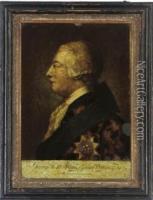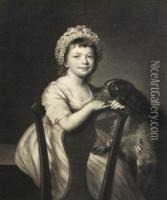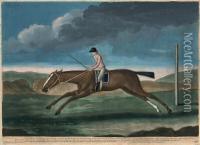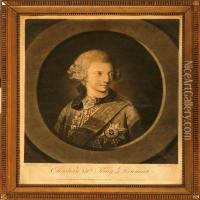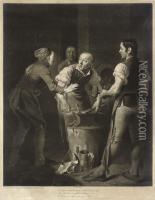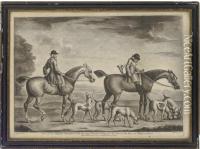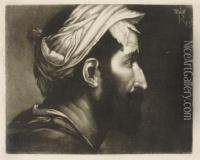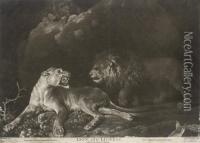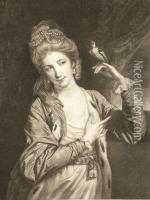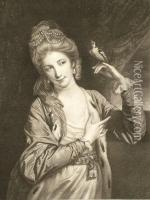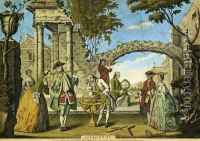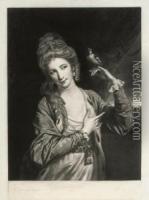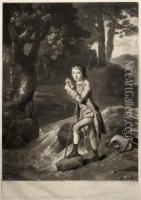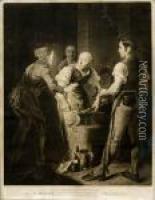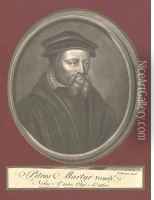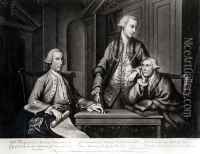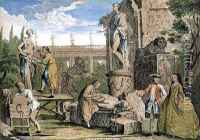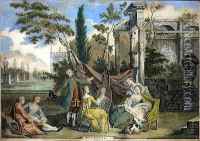Richard Houston Paintings
Richard Houston was a notable Irish mezzotint engraver from the 18th century, renowned for his high-quality prints and portraits. Born in Dublin around 1721 or 1722, Houston's exact date of birth is not well-documented. He learned the art of mezzotint engraving under the guidance of John Brooks, a prominent Dublin engraver. In the 1740s, Houston moved to London to further his career, where he worked for and was influenced by leading print sellers of the time.
Houston's career flourished in London, and he quickly became known for his ability to translate paintings into evocative prints. He engraved works after artists such as Sir Joshua Reynolds, whose portraits were in high demand. Houston was particularly adept at capturing the subtle nuances of these paintings, a skill that won him admiration and patronage.
Despite his success, Richard Houston's life was not without struggles. He faced financial difficulties and even spent time in debtor's prison. These experiences, however, did not hinder his artistic output. Throughout the 1760s and early 1770s, Houston continued to produce a vast number of prints, which included not only portraits but also subjects like genre scenes and historical events.
Richard Houston's work is characterized by its fine detail and rich tonality, hallmarks of the mezzotint process. This technique involves working from dark to light, creating a velvety texture that was ideal for reproducing the depth and atmosphere of oil paintings.
Sadly, Houston's life was cut short when he died in 1775, at the age of approximately 53. Despite his relatively brief career, Houston left behind a legacy that has secured his place in the history of printmaking. His works are still studied and collected today, and they offer a window into the artistic and cultural milieu of 18th century Britain.
